Death row convicts who commit heinous crimes must not be allowed to file mercy petitions
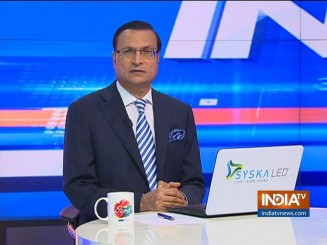 Today I want to share with you the grief of Asha Devi, mother of Nirbhaya, the girl who was gang raped inside a bus in Delhi more than seven years ago, brutalized and thrown out, causing nationwide outrage. I marvel at the tenacity of her mother, who made it a point to attend every court hearing for the last seven years, in the hope of finally getting justice.
Today I want to share with you the grief of Asha Devi, mother of Nirbhaya, the girl who was gang raped inside a bus in Delhi more than seven years ago, brutalized and thrown out, causing nationwide outrage. I marvel at the tenacity of her mother, who made it a point to attend every court hearing for the last seven years, in the hope of finally getting justice.
The Supreme Court gave the death sentence to all the four Nirbhaya case convicts three years ago, the death warrants were signed twice by the lower courts, an executioner was also brought to Tihar jail for carrying out the death sentence, and yet the execution process seems to have got entangled in a maze of judicial procedures with the lawyers filing petitions, one after another, in different courts to stall the execution.
On Thursday, a division bench of Supreme Court had to deal with two petitions – one by the Union government seeking separate hanging of the four convicts, and the other by a convict challenging the President’s rejection of his mercy plea. The apex court reserved its verdict on the convict’s petition for Friday, when it will hear counsels on the Centre’s plea for carrying out separate hangings.
The Supreme Court has already rejected the review and curative petitions of all the four convicts, but in the meanwhile, one convict filed a plea in High Court claiming he was a juvenile at the time of offence. This, too, was rejected.
The Supreme Court is aware of the delaying tactics being employed the lawyers of the convicts, but it can do little except hear the petitions. On Thursday, a sessions court in Delhi observed that “Article 21 of the Constitution protects the life and liberty of a condemned convict till his last breath”.
Nirbhaya’s mother, with her voice breaking, told the court, “I come here every day with the hope of getting justice but I have to return disappointed.” The judge sympathized with her, but said, everyone has to function within the ambit of the law.
Just imagine the trauma the lady has to go through. First her daughter was gang raped and brutally murdered, the entire nation sympathized with her in her hour of grief, and then the long journey for seeking justice began. On every hearing date, the lady used to go to courts, waiting for justice, which is yet to come. This has been going on for more than seven years, even after the death sentence has been pronounced.
I only want to ask: what is her guilt? Is it because she wants death for all the four murderers who pounced on her inside a running bus? Is it because the sympathies of the entire nation are with her? Is she guilty because the President, the Supreme Court, and all lower courts refused to show mercy to the convicts?
The guilt lies with our judicial system. Imagine, for seven years the Nirbhaya case went through the courts, the death sentence was given by the Supreme Court nearly three years ago, their mercy petitions were rejected, and yet her mother is still getting adjournments after adjournments (‘tareekh par tareekh’ in Bollywood lingo).
Imagine the travails of a mother, when the courts give adjournments, and the lawyers for the convicts proudly claim outside the court, for her to hear, that the execution has been stayed “forever”. Nirbhaya’s mother, Asha Devi, wept again outside the courts on Thursday and left, and yet the nation watched in silence the blatant manipulation of our judicial system.
The lawyers for the convicts are so wily that they never file petitions together in order to gain time. They file petitions in different courts – Patiala district court, Delhi High Court and Supreme Court, only to gain time. And every time it is Nirbhaya’s mother who has to walk out with tears in her eyes.
The lawyers for the convicts argue in court, why is the government in a hurry to execute the convicts, when cases of so many death row convicts are pending. One of the lawyers, A. P. Singh, even went to the extent of saying “justice hurried is justice buried”. I want to tell him, there is also the saying ‘justice delayed is justice denied’.
Judiciary must not brook any more delay now. To those who demand that death row convicts must be heard till their last breath, I want to say, where was the ‘right to life’ when these criminals were snuffing out life from the body of a girl? Did she not have the right to life? Legal rights for a convict does not mean resorting to delay tactics and fooling the judicial system.
My heart is filled with anger when I see Asha Devi’s eyes brimming with tears and asking plaintively, ‘when will we finally get justice?’ The law against rape was changed after the sordid Nirbhaya incident, but now, the time has come to dispense with the provision of mercy petitions for those death row prisoners who have committed the most heinous crime on earth. So long as this is not done, our daughters will continue to suffer.
Click Here to Watch Full Video| Get connected on Twitter, Instagram & Facebook
Why BJP got an electoral drubbing from Kejriwal in Delhi
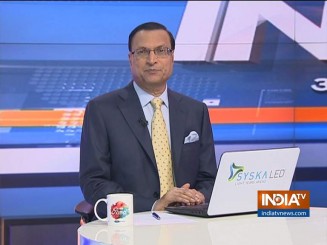 Delhi chief minister Arvind Kejriwal led his Aam Aadmi Party to a historic hat trick in the assembly elections, scoring a landslide win of 62 out of 70 seats, leaving the remaining eight seats to the BJP. Only last year, BJP had won all the seven Lok Sabha seats in Delhi as euphoric voters after the Balakot air strike had given their unflinching support to Prime Minister Narendra Modi.
Delhi chief minister Arvind Kejriwal led his Aam Aadmi Party to a historic hat trick in the assembly elections, scoring a landslide win of 62 out of 70 seats, leaving the remaining eight seats to the BJP. Only last year, BJP had won all the seven Lok Sabha seats in Delhi as euphoric voters after the Balakot air strike had given their unflinching support to Prime Minister Narendra Modi.
This time, the BJP marshaled al its leaders and resources to make a comeback in Delhi politics but failed miserably. Home Minister Amit Shah put in his best efforts, sent party heavyweights like Nitin Gadkari, Rajnath Singh, Smriti Irani, UP CM Yogi Adityanath and former MP CM Shivraj Singh Chouhan to nooks and corners of Delhi to canvass for votes. Nearly 200 MPs were asked to join the campaign and not a single area in Delhi was spared. And yet, the party failed to reach even double digits.
Let us try to understand the reasons behind the people’s verdict in Delhi. Chief Minister Arvind Kejriwal had meticulously planned for the elections almost one and a half year ago. He had prepared his strategy and had finalized the names of candidates. On the other side, in the BJP camp, the local leaders were a worried and harried lot. Even 15 to 20 days before the campaign was about to begin, nobody knew who would lead the party and what would be the party’s strategy.
Everybody in Delhi knew that Kejriwal would contest the elections on issues of free power, free water, mohalla clinics, better schools, but the BJP was yet to decide whether to oppose or support freebies. There was complete confusion in the state party unit.
Kejriwal’s strategy was clear: As the leader and face of the campaign, he would seek votes on issues of free power and free water, and, to top it all, he would refrain from making the remotest criticism of Prime Minister Narendra Modi. Kejriwal had made up his mind to shun negative campaigning and there was clarity about this among his party workers. He ultimately led his party to another historic win.
On the other hand, BJP made Shaheen Bagh, ‘tukde tukde gang’ and sedition as its agenda, and, as the campaign progressed, the attacks became shriller.
Union Minister Anurag Thakur gave the slogan ‘desh ke gaddaron ko, goli maro saalon ko’, party MP Pravesh Verma described Kejriwal as a ‘terrorist’, but the Delhi chief minister refused to bite their baits. He was quite clear about seeking votes in the name of what his government had done in the spheres of water, electricity, transport, education and health.
BJP leaders tried their best to trap Kejriwal on the issues of Shaheen Bagh and Pakistan, but the Delhi CM appeared to be a slippery customer. When a Pakistani minister tweeted about Modi’s impending defeat in Delhi elections, Kejriwal was quick to snub him on Twitter by saying that ” Modi is my Prime Minister and he is also India’s prime minister,” and the “sponsors of worldwide terrorism should not meddle in our internal affairs”.
On being labelled a ‘terrorist’, Kejriwal replied that he was “the son of Delhi” and on a plaintive note, said, how could a “son of Delhi” become a terrorist? By then, the voters of Delhi had made up their mind to elect Kejriwal and his party.
You might be wondering why Congress came up with a pathetic performance by failing to win a single seat. Congress had indeed made up its mind to help Kejriwal win and see the BJP bite the dust. On Tuesday, a Congress leader during election debate in India TV studio remarked that his party “had sacrificed itself in order to defeat BJP in Delhi.” Even Madhya Pradesh CM Kamal Nath knew that his party would not win a single seat in Delhi. Congress had neither projected any leader in Delhi nor did its heavyweights campaign much, leaving the field wide for a straight contest between AAP and BJP.
It is astonishing to note that Kejriwal maintained his party’s vote percentage at 54 per cent that he had secured five years ago. This was achieved despite accounting for any anti-incumbency factor. BJP leaders may feel satisfied that their party’s vote percentage has jumped from 32.2 to 38.5 per cent. But one should remember that was because Congress vote percentage plummeted from 9.7 to 4.3 per cent.
Amit Shah addressed scores of meetings, took out roadshows and spoke to booth level workers till late in the night. He meticulously micro-planned his party’s campaign, and sent several chief ministers and Union Ministers.
However, on the ground level, these chief ministers and national level leaders seemed to be completely clue less, because only a Delhiwallah would know the nuances of conversations and behaviour of voters in the bylanes of Delhi. Leaders who knew the Delhi voters, like Vijay Goel and Vijay Jolly, were absent. There was utter confusion among party workers and local leaders had simply nothing to counter Kejriwal’s claims.
BJP needs serious introspection if it wishes to script a plausible narrative for the average Delhi voter in the coming months. The party must address basic issues that affect the common Delhi voters.
Click Here to Watch Full Video| Get connected on Twitter, Instagram & Facebook
After SC observations, Shaheen Bagh protesters should call off their protest
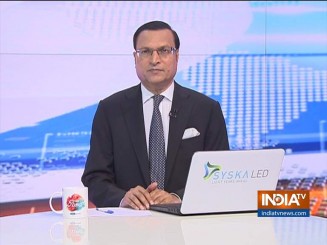 The Supreme Court on Monday questioned the propriety of blocking a public road in Shaheen Bagh for the last two months by anti-CAA protesters.
The Supreme Court on Monday questioned the propriety of blocking a public road in Shaheen Bagh for the last two months by anti-CAA protesters.
A division bench of the apex court observed that “there cannot be an indefinite period of protest in a common area. The protests have been on for a long time. It could be done at an area identified for protests. Can someone block the entire road for an indefinite period?”
On the death of a four-month-old infant at Shaheen Bagh, the court observed: “Did that four-month-old girl go to the protest site? Mothers should support this scrutiny.”
Despite the clear observations from the Supreme Court, the anti-CAA protesters in Shaheen Bagh are unwilling to call off their protest. They are being egged on by the likes of leaders like Mamata Banerjee and Asaduddin Owaisi. Also, senior Congress leader Salman Khurshid was seen a video where a child was shouting ‘azaadi’ slogans.
I was a bit surprised over Salman Khurshid encouraging and supporting the child chanting ‘azaadi’ slogans. Khurshid is an eminent lawyer, he has been the country’s External Affairs Minister, he understands the intricacies of law. Yet, by joining a kid in chanting ‘azaadi’ slogans, Khurshid appeared to be overcome with emotion. This is not going to convey a good message to the people.
The government has already declared through a written reply in Parliament that there was no proposal of implementing National Register of Citizens (NRC) at the moment. The Prime Minister has, time and again, clarified that the Citizenship Amendment Act has nothing to do with Indian citizens. There is nothing more than this government can do. The Shaheen Bagh protesters should discard their adamant attitude and call off the protest. The sooner, the better.
Click Here to Watch Full Video| Get connected on Twitter, Instagram & Facebook
How Modi silenced his critics on Kashmir, CAA citing facts and figures
 Prime Minister Narendra Modi on Thursday addressed both Houses of Parliament while replying to the debate on Motion of Thanks for the Presidents Address. He cited latest development figures about Jammu & Kashmir and silenced his critics on Citizenship Amendment Act by quoting from former prime ministers Jawaharlal Nehru and Lal Bahadur Shastri, who had supported giving citizenship to Hindus persecuted in West and East Pakistan.
Prime Minister Narendra Modi on Thursday addressed both Houses of Parliament while replying to the debate on Motion of Thanks for the Presidents Address. He cited latest development figures about Jammu & Kashmir and silenced his critics on Citizenship Amendment Act by quoting from former prime ministers Jawaharlal Nehru and Lal Bahadur Shastri, who had supported giving citizenship to Hindus persecuted in West and East Pakistan.
First, Kashmir. Modi revealed that in the last 18 months, 24,000 houses were built in J&K, compared to only 3,000 houses built during Congress rule. For the first time, after becoming a Union Territory, J&K policemen are getting the same benefits that are being given to central paramilitary forces. For the first time, elections of more than 35,000 panch and 4,400 sarpanches were conducted, Ayushman Yojana medicare gold cards were given to more than 3.5 lakh people, old age pension scheme was launched and for the first time, anti-corruption law was enforced in J&K.
Modi justified the detention of former CM Mehbooba Mufti and quoted one of her remarks in which she had cast doubts about the decision of people of Kashmir to join the Indian Union in 1947. He effectively silenced his critics on the issue of abrogation of Article 370 by saying that these steps have already been approved by Parliament.
Modi then turned towards Congress and other opposition parties and pointed out how these parties were deliberately creating fear and suspicion in the minds of Muslims over CAA and NPR issues. He quoted from letters and speeches by former PM Jawaharlal Nehru, Lal Bahadur Shastri, B. R. Ambedkar and Ram Manohar Lohia to justify granting of Indian citizenship to Hindus and other minorities persecuted in West and East Pakistan.
Modi tried to clear all nagging doubts about CAA and NRC, and there now appears to be no reason for anti-CAA protests to continue in Delhi’s Shaheen Bagh, Mumbai’s Nagpada, and in Kerala and Kolkata. Since it is physically impossible for a Prime Minister to visit each of these places to assuage the feelings of Muslims, he gave his firm assurance on the floor of Parliament.
The Prime Minister took potshots at Congress leader Rahul Gandhi for his remark the previous day at a Congress election rally. Rahul had said that if youths were not given jobs, they “will start beating Modi ji with sticks after six months”. Without naming Rahul, Modi quipped that he would utilize these six months to tone up his physique by doing Surya Namaskar to face the blows of ‘lathis’.
The problem with Rahul Gandhi is that he is under the false impression that one can become a mass leader if one shouts and attacks opponents mercilessly. In the process, Rahul has been committing blunders. Nearly four years ago, Rahul had bragged that there would be an earthquake if he was allowed to speak for five minutes inside Parliament. Modi made fun of his earthquake remark during his reply, leading to guffaws inside the House. Rahul had said on Wednesday that he never lies and only Modi and Arvind Kejriwal speak lies. The fact is that he had to tender an unconditional apology in Supreme Court for telling a lie.
Rahul should learn from Arvind Kejriwal, who used to attack Modi by calling him a psychopath and Pakistani agent, and had to face the wrath of the voters. Kejriwal has brought a sea change in his attitude, and he has refrained from attacking Modi for the last one and a half years. The sooner Rahul learns the benefits of refraining from personally attacking Modi, the better.
Click Here to Watch Full Video| Get connected on Twitter, Instagram & Facebook
Leaders should learn from common people to accept Ayodhya verdict peacefully
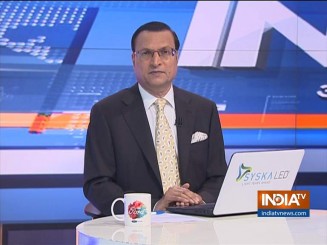 On Wednesday, Prime Minister Narendra Modi announced the formation of Shri Ram Janmabhoomi Teerth Kshetra Trust, four days before the deadline set by the Supreme Court was to end. This trust will build the Ram Temple at his birthplace in Ayodhya on a plot of 67.7 acres. The Cabinet has cleared a detailed scheme for building the shrine and its surrounding complex.
On Wednesday, Prime Minister Narendra Modi announced the formation of Shri Ram Janmabhoomi Teerth Kshetra Trust, four days before the deadline set by the Supreme Court was to end. This trust will build the Ram Temple at his birthplace in Ayodhya on a plot of 67.7 acres. The Cabinet has cleared a detailed scheme for building the shrine and its surrounding complex.
Simultaneously, in pursuance of the Supreme Court verdict, the UP government has allotted five acres of land for building a mosque, nearly 25 km away from the temple site on the Faizabad-Lucknow highway. The land will be handed over to UP Sunni Central Waqf Board.
The Prime Ministers announcement was greeted by members in the Lok Sabha, Outside Parliament, yoga guru Swami Ramdev was the first to welcome the announcement saying that the nation is fortunate in having a PM like Narendra Modi, who has taken this decision keeping in mind the sensitivities and faith of crores of Hindus.
All India Muslim Personal Law Board member Maulana Khalid Rashid Firangimahali of Lucknow said “divisive politics over temple must now end and it is up to the Sunni Waqf Board whether to accept the land gifted by the government or not. ” This is a welcome reaction.
I remember, when the apex court was about to give its verdict, the RSS and BJP leaders had directed their supporters to maintain peace at all cost, and refrain from celebrating in public. The Ayodhya verdict was finally accepted peacefully by all sides.
AIMIM chief Asaduddin Owaisi sought to link the PM’s announcement of the Trust to the forthcoming Delhi elections and said that the timing of this announcement will not help the BJP in the polls.
Politics is a strange subject where leaders draw their own conclusions to suit their line of thinking. Owaisi and leaders of his ilk must know that the formation of the Trust is a sequel to the directions given by the Supreme Court. The court had given deadline till February 9, which was going to expire. The Trust was bound to be set up, and leaders like Owaisi must stop polarizing the society on this dead issue any more.
I believe, politics over temple issue must now end and our leaders should at learn from common Hindus and Muslims who have accepted the apex court verdict peacefully, and with humility.
Click Here to Watch Full Video | Get connected on Twitter, Instagram & Facebook
A study in contrasts: How Modi rescued Indians from China and how Pakistan is still dithering
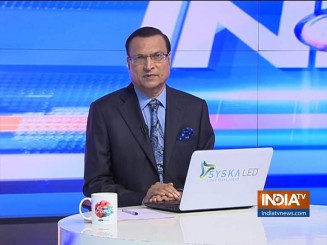 India TV in its prime time news show ‘Aaj Ki Baat’ on Tuesday showed Pakistani students stranded in China’s coronavirus-hit Wuhan crying for help from their government. This happened after Indian government sent two special Air India flights to bring home all Indians trapped in Wuhan city. So far, 647 Indians and seven Maldivians have been brought back from China. Most of them have been quarantined in Manesar for tests and observation, in order to contain the spread of deadly coronavirus.
India TV in its prime time news show ‘Aaj Ki Baat’ on Tuesday showed Pakistani students stranded in China’s coronavirus-hit Wuhan crying for help from their government. This happened after Indian government sent two special Air India flights to bring home all Indians trapped in Wuhan city. So far, 647 Indians and seven Maldivians have been brought back from China. Most of them have been quarantined in Manesar for tests and observation, in order to contain the spread of deadly coronavirus.
In several video messages going viral, these trapped Pakistani students are openly praising Prime Minister Narendra Modi for his quick action and slamming their own Pakistani government for refusing to rescue them in this hour of distress.
The Pakistani government has refused to evacuate its citizens from Wuhan in order to show ‘solidarity’ with its all-weather ally Pakistan. A group of Pakistani medical students wearing masks are seen in videos saying, “Indian students are returning back because their government has sent planes to evacuate them…We want to ask our government, are they waiting for us to die? If not, then please evacuate us as soon as possible.” A female student was seen saying on video, “Sadly, our embassy has said that death is Allah’s willing, which can come at any place.”
There are nearly 30,000 Pakistanis residing in China, out of whom more than 500 students are in Wuhan, the epicentre of coronavirus outbreak.
I have only this to say. Narendra Modi has always excelled in rescuing and evacuating people during natural disasters, wars and pandemic outbreak. He plans to the minutest details any relief, rescue or evacuation plan that is to be executed. He has used his vast experience in providing relief and rehabilitation after the disastrous Gujarat earthquake. He launched operations to evacuate Indian nurses trapped in war-hit Iraq and Yemen. As chief minister of Gujarat, his exploits in evacuating stranded tourists from flood-hit Kedarnath are legendary.
Narendra Modi always believes in forward planning. Even before China allowed Air India special flights to land in Wuhan, Modi had kept ITBP quarantine centre in Manesar and Army hospital ready to handle the inflow of Indians from China.
One is appalled at the obduracy of Pakistan government. If Pakistan lacks resources, I believe, Modi will surely come forward to extend help if Prime Minister Imran Khan sends him a request. In the same way, as India saved Pakistanis trapped in Yemen along with other nationals.
Click Here to Watch Full Video| Get connected on Twitter, Instagram & Facebook
BJP’s aggressive campaign on Shaheen Bagh could prove costly for Kejriwal
 Prime Minister Narendra Modi on Monday lashed out at anti-CAA protesters in Shaheen Bagh, Seelampur and Jamia Millia alleging it was not a ‘coincidence’ (sanyog) but a ‘plot’ (prayog) to destroy communal harmony. Addressing a mammoth BJP election rally, Modi alleged that display of national flag and Constitution was just a deception by protesters to mask their real intent.
Prime Minister Narendra Modi on Monday lashed out at anti-CAA protesters in Shaheen Bagh, Seelampur and Jamia Millia alleging it was not a ‘coincidence’ (sanyog) but a ‘plot’ (prayog) to destroy communal harmony. Addressing a mammoth BJP election rally, Modi alleged that display of national flag and Constitution was just a deception by protesters to mask their real intent.
Modi appealed to voters to support BJP in the Delhi elections in order to, what he called, ‘stop anarchy from spreading’. Modi reminded voters that it was Delhi CM Arvind Kejriwal who had questioned the intent of brave Delhi police officers during the Batla House encounter with terrorists. I have seen that video of Kejriwal today. Modi is right when he is saying that Kejriwal had supported the ‘tukde-tukde’ gang during those days. Modi is also right when he says that Kejriwal had demanded evidence of the surgical strike against Pakistan.
With the change in political scenario, Kejriwal has now changed his style of making statements. He has started making adjustments to suit his political ends. He has not visited the Shaheen Bagh protesters even once. On Monday, Kejriwal recited Hanuman Chalisa at an event.
There has also been a marked change in Kejriwal’s outlook towards Prime Minister Modi. For the first four and half years of his tenure as Chief Minister, he never lost any opportunity to criticize Modi for every step that the Prime Minister took. I remember him once alleging that Modi has a ‘setting’ with Pakistani leaders. In the last six months, Kejriwal has not made a single remark against the Prime Minister either through speech or through his tweets. This is a clear sign of change in Kejriwal’s style of politics. He has realized that his party would suffer politically if he challenged Modi.
And now, about the present state of poll campaign in Delhi. When the campaign began, Kejriwal highlighted what he claimed his achievements in providing free water, free electricity, free DTC bus travel for women, mohalla clinics, modernized government schools and free medical treatment. He thought this would put BJP on the defensive.
However, in the last seven to ten days, BJP has launched a double barrelled attack on AAP. Amit Shah and J. P. Nadda came out with videos to debunk Kejriwal’s claims of providing better schools and hospitals.
Kejriwal was unfazed, but his concern is more over the all-out campaign on Shaheen Bagh, Sharjeel Imam and tukde-tukde gang launched by Amit Shah and Yogi Adityanath. The more Kejriwal tries to evade replies to these attacks, the more BJP’s attacks have become aggressive. Barely three days are now left for campaigning, and Prime Minister Modi’s frontal attack on AAP could prove costly for Kejriwal.
Click Here to Watch Full Video| Get connected on Twitter, Instagram & Facebook
Let negotiations begin to end the prolonged sit-in at Shaheen Bagh
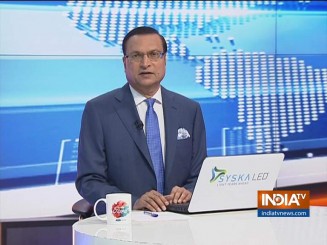 January 30 was Martyrs Day, the day when Mahatma Gandhi was assassinated in 1948. It is the day when people of India solemnly remember the sacrifices made by our national martyrs.
January 30 was Martyrs Day, the day when Mahatma Gandhi was assassinated in 1948. It is the day when people of India solemnly remember the sacrifices made by our national martyrs.
However, on Thursday, a 17-year-old teenager (name withheld because he is still a juvenile) brought a bad name to the country. It was a day of shame, when this teenager wielded a country made pistol near Jamia Millia university, hurled abuses over ”azadi” and then fired a bullet which injured a Jamia student, who is now out of danger. A case of attempt to murder has been filed against the attacker.
The incident took place minutes before Jamia students were planning to take out a protest march towards Raj Ghat, for which they were not given permission. Police had set up barricades nearly 100 metres away from the campus. When Jamia students decided to defy police and marched ahead, a teenager wearing black jacket, suddenly came out from the crowd, waved his country made pistol and threatened to shoot. The protesters shouted at the police asking them to intervene, while some of them moved ahead to overpower him.
In the melee, the assailant suddenly fired a bullet, which injured a Jamia student Shadab Farooq. Police soon overpowered the assailant and took him into custody. By evening, it was clear that he was a minor, and had posted live video of his menacing act on Facebook. The attacker is a resident of Jewar in Greater Noida. Home Minister Amit Shah has ordered ‘strictest action’ against the culprit. He has assigned a Joint Commissioner of Police to probe the entire incident.
The firing of a bullet at a Jamia student has widened the gulf between the supporters and opponents of CAA and NRC. Questions are being raised as to why Delhi police stood silent and watched the gunman carrying out his act of bravado. Watching the videos closely, one can find that the policemen were indeed acting cautiously. One of the policemen was carefully moving forward to overpower the attacker, but suddenly, in a span of 20-25 seconds, he fired. It was only then that the police overpowered him.
The bullet fired by this mindless attacker has pierced the rock solid wall of national unity. It is nothing but an act of defiance against Bharat Mata. I sent India TV anchor Sourav Sharma to Shaheen Bagh, several kilometres away from the spot outside Jamia, on Thursday night to gauge the mood of women protesters sitting there on dharna since 48 days. I told Sourav to speak to the women protesters as long as they wanted.
The women protesters openly spoke about their concerns, their fears about CAA and NRC, and were indeed hurt over the insinuations that were being made in social media that some of them had been hired to sit on a daily payment basis.
I was happy to note that Sourav tried his best to explain the pros and cons of CAA and NRC, and the women protesters frankly spoke about their concerns and fears. Most of them wanted the Prime Minister or the Home Minister to send a representative to talk to them and give written assurances.
I have only one point to make: those who are sitting on dharna at Shaheen Bagh are our mothers and sisters, and those whose children are facing difficulties in going to schools because of closure of roads are also our mothers and sisters. I hope the concerns and fears being expressed by women sitting on dharna in Shaheen Bagh will reach the eyes and ears of concerned authorities, and an initiative must begin to start a dialogue.
Click Here to Watch Full Video| Get connected on Twitter, Instagram & Facebook
AAP cannot say that Shaheen Bagh is not a major election issue in Delhi
 As the voters of the national capital go to assembly polls on February 8, questions arise over what are the burning issues in the current elections.
As the voters of the national capital go to assembly polls on February 8, questions arise over what are the burning issues in the current elections.
BJP, led by its Home Minister Amit Shah, has marshalled a bunch of political heavyweights like former MP CM Shivraj Singh Chouhan, Union Minister Nitin Gadkari, Gujarat CM Vijay Rupani and Defence Minister Rajnath Singh, to raise the Citizenship Amendment Act issue in the poll campaign.
On the other hand, Delhi chief minister Arvind Kejriwal and leaders of his Aam Aadmi Party are trying their best to avoid making any statements on CAA and Shaheen Bagh issues. India TV hosted a daylong conclave ‘Chunav Manch’ in Delhi on Wednesday, where BJP leaders and Union ministers openly spoke on Shaheen Bagh protests,
On the other hand, AAP leaders including Delhi deputy CM Manish Sisodia and Sanjay Singh, avoided making any comment at the India TV conclave on the Shaheen Bagh protests. They also refrained from speaking on JNU student Sharjeel Imam’s video of his anti-national speech in AMU, for which he was arrested after a three-day hunt in Bihar.
The AAP leaders also chose to refrain from speaking on violence in JNU and Jamia Millia, both Central universities located in Delhi. They preferred to concentrate on issues like free water, cheap electricity, modernized schools and hospitals and Mohalla clinics, on which the AAP leaders believe, they are on a strong footing.
All the senior BJP leaders who took part in the India TV conclave and the party poll campaign, concentrated on Shaheen Bagh, JNU and Sharjeel Imam issues. They presented a clear choice before the Delhi voters: Will you support those in ‘Tukde Tukde’ gang who want to dismember India, or will you stand in support of those who are in favour of the slogan ‘Bharat Mata Ki Jai’.
Delhi CM Arvind Kejriwal want the voters of Delhi to decide on water, electricity, education and hospital issues and avoid issues like CAA and Shaheen Bagh. Amit Shah’s reply is simple: Is Shaheen Bagh not in Delhi? Thousands in Delhi are facing problems because of closed arterial roads and shops. Amit Shah is openly telling voters in Delhi to punch the EVM button for BJP so hard that it could resonate in Shaheen Bagh.
I understand Kejriwal’s dilemma. He wants the Muslims in Delhi to vote for AAP, but he does not want to alienate the massive vote bank of Hindu voters on the tricky CAA issue. Clearly, the AAP leaders are making a tight rope walk. At all forums, they say that they are in support of Shaheen Bagh protesters, but not a single AAP leader has gone to Shaheen Bagh to express solidarity with Muslim women and children sitting on dharna since last 47 days.
BJP’s logic is simple: If AAP leaders want to indulge in politics by appeasing Muslims, then why shouldn’t BJP be allowed to indirectly appease Hindu voters? Consciously, or unconsciously, Shaheen Bagh and Sharjeel Imam have become big issues in the Delhi elections. Let the voters decide.
Click Here to Watch Full Video| Get connected on Twitter, Instagram & Facebook
Arresting Sharjeel is not enough, unmask those who planned anti-national conspiracy
 The arrest of JNU student Sharjeel Imam by a joint team of Delhi Police and Bihar Police highlights the motives and intentions of anti-national elements trying to take undue advantage of anti-CAA protests across India.
The arrest of JNU student Sharjeel Imam by a joint team of Delhi Police and Bihar Police highlights the motives and intentions of anti-national elements trying to take undue advantage of anti-CAA protests across India.
Sharjeel Imam is facing sedition charges in five states (UP, Assam, Manipur, Arunachal Pradesh and Delhi) for giving an inflammatory speech in Aligarh Muslim University, where he was seen giving a call for Northeast to be cut off from India. “Assam aur India katke alag ho jaaye, tabhi ye humari baat sunenge (Only once India and Assam are cut off from each other will they listen to us),” he can be heard as saying in the video.
No patriotic Indian worth his or her salt can countenance such a seditious remark, particularly at this juncture when inimical forces are trying to destabilize India by injecting communal colour to politics. Sharjeel Imam was one of the handful of student leaders who took part in mobilizing Muslim women at the Shaheen Bagh protest in Delhi.
It goes to the credit of Delhi Police that it arrested the offender within 48 hours of the video surfacing on social media. Home Minister Amit Shah has already said that such anti-national elements will be dealt with sternly.
Watching inflammatory speeches of Sharjeel Imam, his brother and another JNU student Afreen Fatima, the general impression that was sought to be created was that there is fear in the minds of Muslims over CAA and NRC, was only a cover for anti-national elements.
There was meticulous planning behind anti-CAA protests across India, particularly in Shaheen Bagh, with clear ulterior motives. Muslims have not taken to the streets out of fear; they have been intimidated and misguided by nefarious elements to come and join the protests.
Mere inflammatory speeches were not enough. There was planning by People’s Front of India (PFI), a Muslim outfit, whose supporters indulged in arson and violence in cities of U.P. and Rs 134 crore was disbursed by this outfit throughout India to stage anti-CAA protests. From where did the money come?
It was not mere coincidence that the Shaheed Bagh dharna is taking place right outside the PFI office in that locality. This seems to be part of a major anti-national conspiracy. Those who gave inflammatory speeches are being nabbed, but the real characters who are behind this conspiracy must be unmasked. At the earliest.
Click Here to Watch Full Video | Get connected on Twitter, Instagram & Facebook
World’s largest cricket stadium in Ahmedabad is ready for inauguration
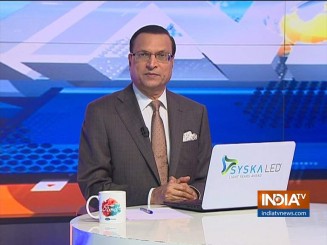 The world’s largest cricket stadium, one of Prime Minister Narendra Modi’s dream projects, is ready for inauguration next month in Ahmedabad.
The world’s largest cricket stadium, one of Prime Minister Narendra Modi’s dream projects, is ready for inauguration next month in Ahmedabad.
Built at a cost of nearly Rs 700 crore, it has a seating capacity of 1,10,000, bigger than the Melbourne Cricket Ground, which has a capacity of 1,00,000 spectators.
Named after Sardar Vallabhbhai Patel, this cricket stadium in Motera, has world class facilities. To facilitate spectators for uninterrupted viewing of matches, no pillar has been erected which can block their view. Environmentally, this is a ‘green stadium’ and not a single drop of water will go waste because of a waste water management plant. Water that is used in the stadium will be treated for use on the ground.
This stadium was planned when Narendra Modi was chief minister of Gujarat and president of Gujarat Cricket Association. Work on the stadium began in 2017 and it is now ready within three years.
The stadium has a food court and hospitality area in every stand. There is space for an indoor cricket academy equipped with indoor practice pitch. There is also a 55-room club house, space for outdoor and indoor games and facilities for 40 other sports, an Olympic size swimming pool and a well-equipped gym.
This stadium will have connectivity with Ahmedabad Metro. It has a parking space for 3,000 cars and nearly 10,000 two-wheelers.
Floodlights installed in this stadium are quite different from those in other stadiums. Normally, floodlights are installed on tall towers, but floodlights imported from Holland have been installed on the roof of this stadium. These floodlights will not cast reflection on the eyes of players. In other words, fielders will not face problems while taking a high catch.
The stadium at Motera has 75 corporate boxes, compared to only 20 to 25 corporate boxes found in other stadiums of India. There will also be a presidential suite.
After watching detailed visuals of this stadium today, I can only say this: Prime Minister Modi always things big, very big. This is not only a cricket stadium, it is India’s pride, like the world’s tallest Statue of Unity. After watching these two marvels, any Indian will definitely have a sense of pride in his or her heart.
There are speculations that the US President Donald Trump may get a fabulous reception in this stadium when he visits India next month. Just imagine Trump watching more than a lakh people packed inside a stadium chanting ‘Modi, Modi’ slogans.
Click Here to Watch Full Video| Get connected on Twitter, Instagram & Facebook
How the Ganga ghats of Patna have been miraculously transformed
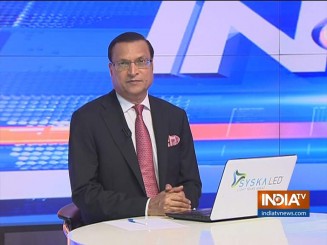 Sixteen out of the twenty ghats on the banks of holy river Ganga in Patna have been transformed beyond recognition as part of the Namami Gange, the dream project of Prime Minister Narendra Modi.
Sixteen out of the twenty ghats on the banks of holy river Ganga in Patna have been transformed beyond recognition as part of the Namami Gange, the dream project of Prime Minister Narendra Modi.
India TV in its show ‘Aaj Ki Baat’ on Wednesday night telecast a special story on the beautification of the ghats in Patna. Till last year, most of these ghats were in a filthy condition. Remember, last year’s floods in Patna? Large sections of media, including India TV, had raised questions over how the city was waterlogged for nearly a week due to water overflowing from the river Ganga.
Under the river front beautification project, 16 out of the 20 ghats have been beautified and connected with each other, stretching over almost six kilometres, right from Collectorate ghat to Nauzar ghat.
India TV reporter Nitish Chandra walked the entire stretch and did not find a single spot in filthy condition. Madhubani paintings adorn most of these ghats to give them a classy look. Now, elderly people come for morning walk and students come here to sit and study under street lights. In the evenings, families come to these ghats for a pleasant stroll.
After dusk, these ghats present a beautiful sight with coloured LED lighting. More people now flock to the daily evening Ganga Aarti rituals at the ghats. Already nearly Rs 300 crore have been spent and more work is in progress. Food kiosks have opened under high mast street lights. Slowly and steadily, the Ganga ghats in Patna are emerging as a tourist spot.
Most of the credit for this good work goes to Prime Minister Narendra Modi, and Bihar chief minister Nitish Kumar. Without the support of state government, such results are difficult to obtain at the ground level.
Modi has brought about a complete transformation in how government utilities work. He has this knack of micro-planning, right from the top to the lowest end, and he always fixes deadlines, so that work must not linger on. The system is the same, the officials are the same, but the pace and quality of work have changed.
Click Here to Watch Full Video| Get connected on Twitter, Instagram & Facebook